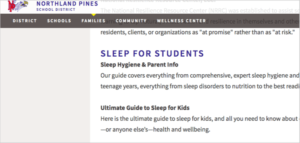
A/B subject header testing is a crucial component of email marketing that allows businesses to optimize their communication strategies. By comparing different subject lines, marketers can identify which ones resonate best with their audience, ultimately leading to higher open rates and engagement.
Understanding the nuances of A/B testing not only enhances email performance but also contributes to more effective marketing campaigns overall. This process involves careful planning, execution, and analysis to ensure that each subject line is working towards driving better results.
A/B Subject Header Testing Overview

A/B subject header testing is a crucial component of email marketing that allows businesses to optimize their email outreach and improve engagement with their audience. By testing different subject lines, marketers can determine which variations resonate most with recipients, ultimately leading to higher open rates and increased conversions. This process is not only about trial and error; it’s about making informed decisions backed by real data.Launching an effective A/B test for subject headers involves several key components.
First, it’s essential to identify the goal of the test, whether that’s maximizing open rates, click-through rates, or some other metric. Next, create two or more variations of the subject header that differ in a meaningful way, such as length, tone, or the inclusion of personalization. Finally, segment your audience to ensure each group receives only one version of the email.
Companies like HubSpot and Mailchimp have successfully implemented A/B testing, resulting in notable improvements in their email performance metrics.
Best Practices for A/B Subject Header Testing
Creating and implementing an A/B test for subject headers requires careful planning and execution. Start by defining a clear hypothesis about what you expect the results to be. Ensure that the subject headers you are testing are distinct enough to yield meaningful results. When conducting your tests, ensure that the sample size is large enough to provide statistically significant outcomes.There are common pitfalls to avoid in A/B testing.
One major mistake is testing too many variables at once, which can lead to confusion about what caused a change in metrics. Additionally, failing to track results accurately can obscure insights that could inform future strategies. To help businesses effectively prepare for A/B testing, here’s a checklist to follow:
- Define clear objectives for your test.
- Choose distinct variations of the subject header.
- Segment your audience appropriately.
- Ensure you have a large enough sample size.
- Track and analyze the results comprehensively.
Analyzing Results from A/B Subject Header Testing
Measuring the effectiveness of different subject headers involves tracking metrics such as open rates, click-through rates, and conversion rates. These metrics help gauge which subject line performed better and why. To interpret the results effectively, it’s necessary to consider the context in which the emails were sent, including timing and audience demographics.Here’s a comparative table outlining various metrics that can be measured during A/B subject header tests:
| Subject Header A | Open Rate (%) | Click-Through Rate (%) |
|---|---|---|
| Subject Header One | 25% | 5% |
| Subject Header Two | 30% | 7% |
Impact of A/B Testing on Affiliate Revenue
A/B subject header testing can significantly enhance affiliate marketing strategies by optimizing how promotional emails engage potential customers. For instance, when affiliate marketers implement A/B testing, they can discover which subject lines lead to higher click rates on affiliate links, ultimately boosting revenue.Case studies illustrate how A/B testing has led to increased affiliate revenue. One affiliate marketing website saw a 15% increase in sales after refining their email subject lines based on A/B testing results.
Successful affiliate marketers utilize the following tips when implementing A/B testing:
- Test variations that highlight unique selling propositions.
- Incorporate urgency or exclusivity in subject lines.
- Use personalization to make emails more relevant to recipients.
- Continuously iterate and optimize based on performance data.
A/B Testing in Relation to Other Online Business Strategies
A/B subject header testing offers a complementary approach to other online marketing strategies, such as PPC advertising and banner advertising. While PPC focuses on driving traffic through paid channels, A/B testing enhances organic engagement through emails, providing a holistic view of customer interaction.Additionally, A/B testing integrates seamlessly with autoresponders and email campaigns. By continually assessing subject lines, marketers can refine their messaging based on actual performance data.
This practice can also extend to blogging strategies, where A/B testing can optimize headlines for blog posts, leading to increased readership and engagement.
Tools and Resources for A/B Subject Header Testing
There are numerous tools and platforms available for conducting A/B tests, each offering unique features that cater to varied marketing needs. Popular options include Mailchimp, Optimizely, and HubSpot, which provide user-friendly interfaces and analytics capabilities.The benefits of using specific A/B testing tools include enhanced data analytics, ease of integration with existing marketing systems, and automated testing processes that save time.
Below is a table of recommended resources for A/B subject header testing:
| Tool | Features |
|---|---|
| Mailchimp | Email automation, audience segmentation, detailed analytics. |
| Optimizely | Robust testing tools, data-driven insights, and multivariate testing capabilities. |
| HubSpot | Integrated marketing tools, reporting, and analytics. |
Case Studies on A/B Subject Header Testing
Several businesses have successfully employed A/B subject header testing to enhance their marketing efforts. One such business, an e-commerce retailer, tested different subject lines for their promotional emails and found that a more personalized approach led to a 20% increase in open rates. Another example includes a SaaS company that adjusted their subject lines based on user behavior, resulting in a 35% boost in engagement.Key takeaways from these case studies include the importance of personalization, the value of testing distinct variations, and the necessity of analyzing results to inform future strategies.
These insights are crucial for any business looking to implement effective A/B testing.
Future Trends in A/B Subject Header Testing
Emerging trends in A/B testing for email marketing indicate a shift towards more automated solutions driven by artificial intelligence and machine learning. These advancements allow marketers to analyze vast amounts of data more efficiently, leading to quicker and more informed decisions.As technology continues to evolve, we can expect automation tools to become even more sophisticated, allowing for real-time adjustments based on user interactions.
This dynamic approach to A/B testing will likely enhance the effectiveness of email campaigns, positioning businesses to respond swiftly to changes in consumer behavior.
Last Point
In conclusion, A/B subject header testing is an invaluable tool that empowers marketers to make data-driven decisions. By continually refining their approaches based on real-time results, businesses can significantly boost their email effectiveness and overall marketing success.
FAQ Insights
What is A/B subject header testing?
A/B subject header testing involves comparing two or more subject lines to determine which one performs better in terms of open rates.
How long should I run an A/B test?
The duration of an A/B test can vary, but a common approach is to run tests for at least 24-48 hours to gather sufficient data.
Can I test more than two subject lines at once?
Yes, you can test multiple subject lines simultaneously, often referred to as multivariate testing, but it can complicate analysis.
What metrics should I focus on when analyzing results?
The primary metrics to consider are open rates and click-through rates, as they directly indicate the effectiveness of the subject lines.
Is A/B testing only for email marketing?
No, A/B testing can be applied to various marketing strategies, including website content, advertisements, and landing pages.





